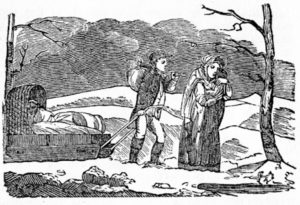Sorry, Farmer’s Almanac. Your prediction of colder than normal temperatures this winter from Washington to Boston proved to be very wrong. Indeed, this is being called “the year without a winter.”

This past meteorological winter from Dec. 19 to March 19 was the warmest since record keeping began in 1886, with average temperatures in most parts of the globe four to five degrees above normal. Spring is now officially here, but for those of us living on Outer Cape Cod, spring arrived sometime last December and has never left.
In 1816, winter arrived in April and never left. That year has gone down in history as the year without a summer.
It began in 1815 with the eruption of Mt. Tambora on the Indonesian island of Sumbawa, the largest volcanic event on record and one of the largest eruptions in the past 10,000 years. The explosion immediately killed 90,000 people and sent plumes of gas and ash 43 kilometers into the stratosphere, with fallout spreading some 1,300 km. Within a few weeks, a dust cloud of debris estimated at 100 cubic km circled the planet, creating havoc with the world’s weather systems for the next three years.
Diarists wrote of a “dry fog,” dispersed neither by rain nor wind. It was little understood at the time: a newspaper of April 12, 1816, reported, “There is a sickness at Cape Cod attributed to miasma arising from Putrid Squin [sic], which have been caught in large quantities, and spread for manure.”
Shebna Rich describes a “great sickness” in his 1883 book, Truro Cape Cod, Land Marks and Sea Marks. A February 1816 epidemic stretched from Brewster to Provincetown, in which 36 died in Truro and 72 in Eastham, the worst hit town, Rich reported. Although physicians at the time could give no satisfactory reason for the epidemic, it has since been linked to similar epidemics in Ireland and the U.K. associated with the release of large quantities of sulfur by the Mt. Tambora eruption. Worldwide, there were famines, riots, arson, and looting; fatalities were twice that of average years.
In New England, 1816 was also called “eighteen hundred and froze to death,” for the dust cloud obscured the sun, precipitating deep freezes through spring and summer, with temperatures on average three to six degrees F below normal. A drought occurring at the same time resulted in widespread crop failures and a sharp rise in the price of vegetables, grains, meat, flour, butter, and milk. The absence of a tree ring on oaks provides the only known recorded evidence of zero tree growth that year.
Crop failures intensified pressure on fishing. A 2017 study published in the journal Science Advances focused on the effects of 1816’s extreme weather on coastal and riparian fisheries. The report targeted alewives, shad, herring, and mackerel, species whose migration and spawning are affected by temperature. The earliest arrivals, alewives, suffered the worst. Insufficient alewife runs led fishermen to target mackerel, the next species appearing in abundance along the coast. Over time a regular pattern of increasing exploitation evolved.
Could this happen again? Of course, but it is statistically unlikely. Volcanos still erupt and no one can predict where or when. On the other hand, we as humans appear to be providing Earth’s weather systems with our own version of a volcanic eruption.
